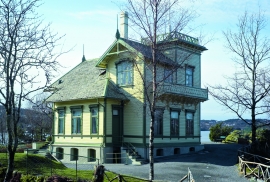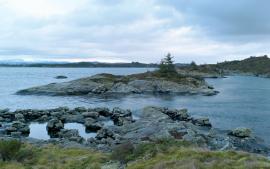- Remove Music filter Music
- Remove Hydro power filter Hydro power
- Remove Fisheries filter Fisheries



Frøland
Much rain, a steep drop and nearness to Bergen meant that the power-making potential of the Samnanger water system was exploited early. Samnanger was thus one of the first power-producing municipalities in western Norway. With its subsequent expansion and new power stations, about 400 gigawatts of electricity per hour were produced on average each year. This is enough to meet the energy needs of 25,000 households.


Goltasundet
For generations the land-seine was the most important tool for catching herring and mackerel, and therefore a suitable casting bay was worth its weight in gold. Goltasundet (the Golta sound) on Golta was such a place. Here the herring often drifted in and fantastic casts might be made here.

Skogsvåg
Kval i våg! Når det ropet gjekk, var det berre å få ut den kraftige kvalnota til å stengja vågen med, og så kunne veidinga ta til. I uminnelege tider har det vore drive kvalveiding i Skogsvågen.

Toftestallen
The large coastal waves that crash down on the islands west in the sea gather their energy from storms and winds all the way out in the North Atlantic Ocean. The most common place of origin is nonetheless the North Sea. When these waves break over the skerries and islets along the shore, or on the rocky outermost islands, their energy is released. This takes the form of turbulence in the water and sea spray up on land. Can the enormous energy contained in the waves be exploited?


Hummelfossen
As early as 1906 the Matre and Haugsdal waterway was bought up by the businessman Blauuw from Bergen; the first “waterfall speculator” in the Matre area. He immediately resold it to Fr. Hiorth, who transferred all the rights to the company Matrefaldene in 1908. Behind A/S Matrefaldene were German interests, Badische Anilin und Sodafabrik, which wanted to start production of saltpetre fertilizer with nitrogen and electricity.



